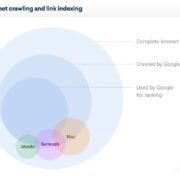Those who hesitate to digitize will fall behind and lose money. Traditional infrastructure is becoming a bottleneck, and data silos are a hindrance, argues Vala Afshar, chief digital evangelist at Salesforce, in a guest post.
Seventy-two per cent of all customer interactions today are digital – but most companies (70%) are not prepared for this. This is a result of the 2022 Connectivity Benchmark Report by Vanson Bourne and Deloitte Digital on behalf of MuleSoft, a subsidiary of Salesforce. The companies surveyed have considerable difficulties offering astringent, networked user experience across all contact channels. This costs companies an average of more than 6 million euros in sales.
According to the study, the financial losses of a slow digital transformation are considerable. Therefore, companies must not waste more time moving forward with their initiatives because the speed with which transformation projects have to be carried out today has become much faster.
Poor integration and high losses due to old code and IT silos
According to the 1,050 IT executives surveyed worldwide, the increased revenue losses are: There are more business applications than ever before, but the responsible persons are less and less able to integrate them. This is very often due to outdated code and legacy systems.
Data silos also pose a permanent challenge to 90 per cent of companies. Their integration requires increasing numbers of data scientists, analysts and customer support staff, who are hardly available due to the shortage of skilled workers. The biggest challenges lie in incorporating and integrating the insights gained from the data into user-oriented applications.
Fifty-five per cent of companies confirm that it is difficult to integrate user experiences. Last year it was 48 per cent. Barriers are security and governance requirements, outdated infrastructure, and a lack of skills to keep up with changing processes, tools, and systems.
Many more IT projects – more than half break the time frame
IT departments struggle to meet deadlines. The numbers speak for themselves: more than half of their projects were not completed on time last year. At the same time, the IT department’s number of projects to be carried out has increased by 40 per cent in the previous year. For comparison: in 2021, this growth rate was 30 per cent.
Traditional infrastructure continues to slow the pace of project delivery, making IT a bottleneck for innovation. The good news is that IT budgets are increasing. Eighty-five per cent stated that their IT budgets are constantly growing. In 2011 this was the case for 77 per cent, and in the 2020 report for three-quarters of the companies surveyed.
Comprehensive API strategies are required.
More than a quarter of CxOs are therefore demanding a company-wide API strategy. That is almost twice as much as twelve months ago. Additionally, leaders understand how the combination of API-powered connectivity and automation can lead to better employee and customer experiences.
Overall, the acceptance of apps is increasing sharply, but integration is lagging: companies currently have an average of 976 applications. That’s a sharp increase from 843 last year. On average, only 28 per cent of these applications are integrated, even though the average lifespan of a typical application is around four years.
High integration costs for individual solutions
In 2021, companies spent almost $10 million on custom integrations. They expect a similar amount this year. These individual integrations devour a high proportion of the budget.
Integration challenges
Overall, those responsible for IT perceive the integration requirements as increasing. Company-wide, they faced these hurdles in particular:
· Incorporate data from previous insights into user-side applications (75%)
· Reuse of data sources in different applications (73%)
· Correlate data in the warehouse to derive insights (71%)
· Moving data from source systems to the data warehouse (70%)
How CxOs should shape their integration and API strategies
Based on these findings, I have four concrete recommendations:
1. Empower subject matter experts with low- and no-code tools: These offer simple drag-and-drop components based on reusable APIs to create integrated user experiences. In this way, corporate potential can be exploited, and the digital transformation accelerated.
2. Address security and governance challenges: Security is an acute challenge for IT teams as they transition to API-driven connectivity concepts. A security problem can delay transformation projects or permanently cause them to fail. Organizations should choose vendors that offer multi-layered protection of the data itself, the API that provides access to it, and the environment in which the API is exposed.
3. Focus on API reuse: The era of point-to-point integrations is ending. A more flexible, agile, and cost-effective way to create user experiences is in its place—reusable, API-driven integration. It is faster, cheaper and significantly more efficient for IT and business.
4. Create a Single Source of Truth (SSOT): Data-driven companies will increasingly differentiate themselves from the competition. To do this, they must break down long-established data silos. An SSOT ensures that all users work with the same standardized, relevant dataset and derive meaningful insights from this data through API-supported connectivity.























Comments